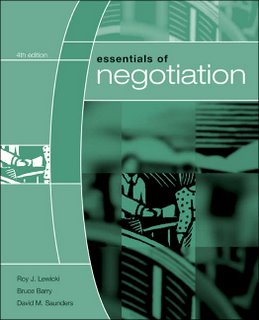Leave Tendulkar Alone

Pic Source: Rediff
Exams going on..but then I am a Tendulkar fan and couldn't resist myself from reading this article. The guy is GOD.Hope he brings the world cup for us this time.
I started this blog when I made up my mind to attend a business school. I continued blogging sharing my Queen's MBA experiences. And now, I share my thoughts on life after my MBA! Moments of joy, failure, triumph, success….Hard work, determination, guts, sacrifice, luck. My story!
Leave Tendulkar Alone

Want to go Public (IPO)
Useful Books and Sites for New Ventures
Q&A with Infosys' CEO
What is Infosys today? Is it a software services company, an HR outfit, a construction company, a travel company, or a hotel company? Is Infosys spreading itself too thin?
It so happens that we have the largest university. It also happens that we have the largest hotel, and we do have our own buses and vehicles to move people around. Fundamentally, we are an IT services company solving customers' problems.
Happy Republic Day
* India has 10 of the 30 fastest-growing urban areas in the world. Based on current trends, a massive 700 million people (roughly equivalent to the current population of Europe) will move to cities by 2050. This will have significant implications for demand for urban infrastructure, real estate, and services.
* Policies to enhance financial sector growth, openness to trade, rural-urban migration, capital formation, education, and environment — together labelled the `FORCE' factors — will be critical to sustaining growth.
* Assuming that policies to open up the financial sector remain on track, including the entry of foreign banks starting from 2009, there will be more "financial deepening". This will contribute to increases in productivity in the medium term.
* Today, India is the fastest growing market for mobile phones, with average growth rates of over 80 per cent every year since 2000.
* The success of India's elite students from IITs and IIMs masks the generally abysmal state of higher education in India. Higher education remains heavily regulated, with little to encourage private-sector participation or innovation
Positive People Flows
Students Live in Queen's Library for 10 Days to Raise Money for World Literacy
D.R.E.A.M (Discover theReality of Educating All Minds), a
Queen's University club, has parked a car inside the lobby of Queen's Stauffer library and will be living in it for tenconsecutive days: from Friday, January 19 until Monday, January 29.
Leslie Chan and John MacDonald will be sleeping in a Suzuki SX4 provided byD.R.E.A.M. partner Suzuki Canada Inc, as part of Mission: Ultimate StaufferLockdown (M.U.S.L.).
D.R.E.A.M. aims to raise more than $10,000 for theconstruction of three
school libraries in rural Nepal by D.R.E.A.M.'s parentorganization, Room to Read Canada. "The rules are quite simple," states Chan,
D.R.E.A.M.'s Vice-president ofPublic Relations, "no classes, no household comforts, and only 5 minutes offreedom away from the library each hour. It's definitely going to be anexperience!"
Organized Chaos - IDEO


"Is this industry attractive"?

26th John Molson MBA International Case Competition

What B-Schoolers Lust For Now
At Dartmouth's Tuck School of Business, six students were so desperate to
snag private equity work that they passed on surfing vacations over winter break
to fly to Mumbai, India, where they performed free labor for private equity
firms looking for research. While there, the students knocked on doors and
chatted up receptionists in the hope of getting in front of some private equity
and hedge fund partners. "You have to find innovative ways to differentiate
yourself," says one of the students, Shelly Rastogi
Build a Business Challenge

"Axon was assigned to assess Nymity's case. An aerospace engineer who
worked at Spar Aerospace in the late 1990s, Axon jumped to the Canadian Space
Agency in Montreal, where he focused on mission planning for the space station's
robotic arm. Then he shifted to Queen's University for a special MBA in science
and technology; he thought about starting his own company but landed at Ventures
West in 2001.
"I'm an investment officer," Axon says. "My job is to find potential
investments and pick the ones that are best for us. We will guide them through
to success."
From a Caterpillar to a Butterfly

Michael Gordon's 10 Brainstorming rules
1. Define your purpose
2. Choose participants
3. Choose facilitator
4. Brainstorm Spontaneously
5. No criticism, no negatives
6. Record ideas in full view
7 Invent to the "void"
8. Resist becoming committed to one idea
9. Identify the most promising ideas
10. Refine and prioritize
The business plan is obsolete the instant it emerges from the printer. Business Plan should be thought of as a work in progress.!
Queen’s research showcased during Ontario government mission to India
Guru in Toronto

Here is what one of the papers had to say:
Official statistics are scant, but it has been reported the Bollywood filmThe movie is the rags to riches story of an Indian who dreamt and made it big in the corporate world. Reviews here and here
industry is the biggest in the world in terms of viewers, with an audience of
more than 3 billion, compared with Hollywood's 2.6 billion in global ticket
sales.India's film industry, valued at about $1.75 billion in 2006, is forecast
to nearly double to $3.4 billion by 2010, according to estimates by
PricewaterhouseCoopers.
In Canada, Bollywood's profile has been boosted by the work of
Indo-Canadian filmmakers like Deepa Mehta, whose latest movie ,"Water," has been
selected as the official foreign-language entry from Canada at this year's
Academy Awards.
An MBA pays dividends
Gates Foundation Guest Speaker: Dr. Lutz Goedde
Hello iPhone

Apple chose the name iPhone even though Cisco
Systems, the network and consumer wireless company, has recently introduced
a Wi-Fi-based phone with the same name. Mr. Jobs had been negotiating with Cisco executives over the trademark in recent days.Reuters reports :
Jobs predicted that in 2008 Apple could sell 10 million iPhones, representing roughly 1 percent of the current annual mobile phone market of 1 billion units a year. Last year, the consumer electronics market globally was worth $145 billion.
Another interesting article here. Let us wait to see how the market reacts !
Social Entrepreneur-The New Heroes
Queen's MBA at the MBA Games



Six mega-trends that define India's future.
MEGA-TREND #1 is the acquiring of scale
The
telecom market was 5 million connections 15 years ago; now it is over 180
million, and the fastest growing in the world. The fourth-largest phone company
in India is now being valued at $20 billion.
On a visit to India some years ago, the chairman of General Electric
(Jeff Immelt) said that whenever his company had bet on the Indian market, it
had failed them; but whenever they had bet on the Indian people (Indian skills,
that is), the bet had paid off. But by his last visit to Delhi, Immelt had
changed his view: now the market is working too.
MEGA-TREND #2 is the spread of connectivity and
awareness
MEGA-TREND #3 is the growth of the middle class --
talked about and anticipated for 20 years, but finally acquiring true scale. In
2001-02, there were 61 million Indians belonging to families that earned more
than Rs 2 lakh (Rs 200,000) a year; by last year (2005-06), that number had
crossed 100 million.
MEGA-TREND #4 has to do with the growing problems of
growth. There is the environment: the increasing pollution of air
(all those additional cars), the dropping of the groundwater table, and the
failure to renew resources (like forests).
MEGA-TREND #5 has to do with India's increasing openness to
the world.
The number of US visas issued in India doubled in 2006, to over 800,000 --
more than in any other country, barring Mexico. More Indian students are
studying in other countries than those of any other nationality, barring perhaps
China. Neither of these was remotely true 15 years ago.
MEGA-TREND #6 the continuing dominance of
youth.
Something like half of India is under 25, and it will remain that way for
some time. This is usually spun around into the economic fact that a higher
percentage of people will be in the working age till the mid-twenty-first
century, but that is only one facet.
MBA Games 2007
MBA schools pit their best in test of academic and physical prowess:
More than 300 MBA students are taking part in the quest for overall
achievement.
The deep-thinking business post-grads are engaged in such
brinkmanship as case study competition in strategy and marketing, "Business
Jeopardy," spirit competitions, and volleyball, soccer, basketball, water polo
and inner tube water polo, along with some night clubbing
The games began at Queen's University 20 years ago.This year's theme is innovation ...
The MTV generation gets plugged in
Greatest Canadian Invention

Best Practices in Negotiation
 I am working on the Negotiations assignment and one of the chapters in the book talks about the Best Practices in Negotiation. I have listed them below. Makes an interesting read.
I am working on the Negotiations assignment and one of the chapters in the book talks about the Best Practices in Negotiation. I have listed them below. Makes an interesting read.Happy New Year
Web 2.0 is different
As we head into 2007, there are by some counts more than 400 social-networking
sites, all trying to become the next MySpace; more than 200 web-video sites, all
trying to become another YouTube; more than 300 “social-bookmarking” sites, and
hundreds of “meta-sites” that “aggregate” the other sites by spitting out
computer-generated lists of hyperlinks. Rhetorically, the entrepreneurs behind
these sites usually claim that they will make money from “advertising”. In
reality, most hope to sell themselves to Google, Yahoo!, News Corporation or one
of the other “new” or “old” media giants long before they have to prove any
revenue model